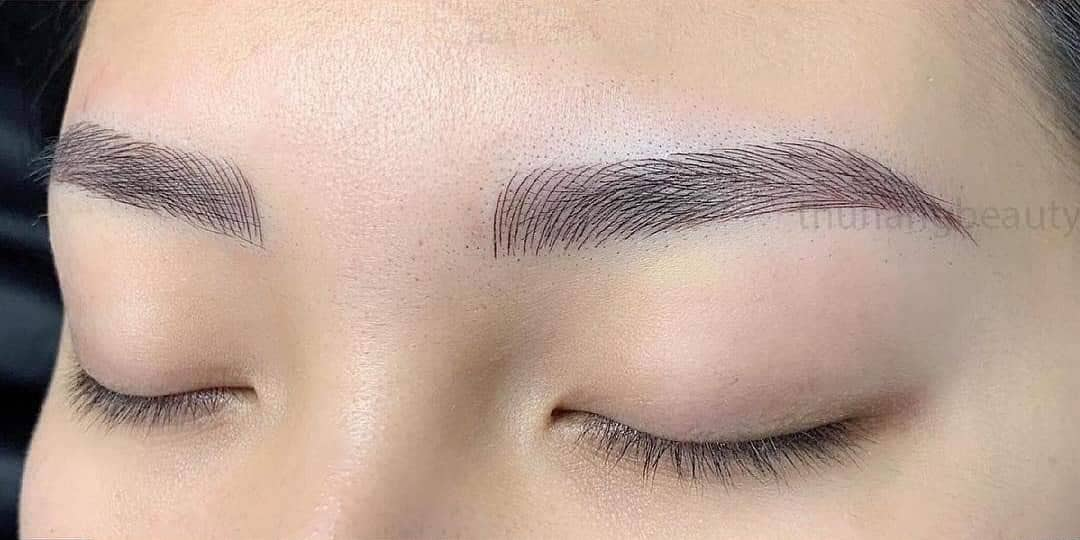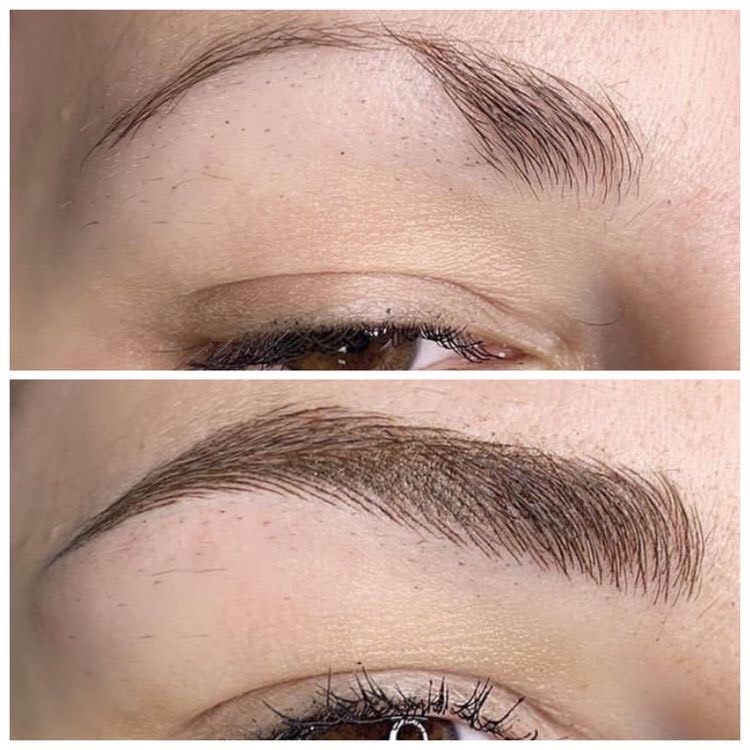What Is Microblading?
Microblading eyebrow embroidery is a technique that creates individual hair-like strokes following the natural direction and shape of the client’s real eyebrows. These strokes are blended seamlessly with the existing hairs to achieve a soft, natural-looking brow effect.

Microblading differs from traditional eyebrow tattooing in that each hair-like stroke is created manually using a blade to make fine cuts in the skin, whereas eyebrow tattooing is done with a machine and a cluster of needles.
Microblading is typically used on the eyebrows to create, enhance, or reshape their appearance in terms of both shape and color. The pigment is deposited into the upper region of the dermis, so it fades more quickly than traditional tattooing techniques, which implant pigment deeper into the skin.
Microblading artists are not necessarily tattoo artists, and vice versa, as the techniques require different training and skill sets.
Characteristics of Microblading Eyebrows Compared to Traditional Eyebrow Tattooing
Unlike traditional tattooing methods that use machines, microblading implants ultra-fine pigment strokes into the skin using a handheld manual tool that mimics the appearance of natural eyebrow hairs.
The microblading pen is equipped with a sterile, single-use blade that glides gently across the skin, creating fine cuts—much like paper cuts—that leave behind hair-like marks nearly indistinguishable from real hairs.
Depending on the drawing technique something we specialize in it creates a perfectly tailored look that suits your face and the style you want to achieve. Best of all, your brows won’t look like they’ve been tattooed at all.
Microblading is an ideal option for anyone looking to enhance the appearance of their eyebrows. The result is realistic, natural-looking hair strokes—regardless of how much eyebrow hair you currently have.
People experiencing hair loss due to conditions like alopecia, trichotillomania, or any other issue that causes thinning brows can greatly benefit from microblading. It’s also perfect for those who are simply dissatisfied with the shape or fullness of their eyebrows.
Achieving natural-looking eyebrows using makeup pencils and brow powders can be time-consuming, challenging, and often requires multiple touch-ups throughout the day.With microblading, your brows are professionally shaped once—and they stay that way every day!
There are two types of Microblading eyebrow techniques.
Technique number 1
Microblading or manual embroidery technique is one of the most well-known and widely used methods around the world.Pigment is scratched into the skin using a group of needles, with each stroke creating a hair-like line.Some people refer to this technique as “hair-stroke tattooing,” while in many parts of Asia, it is commonly known as “eyebrow embroidery.”
Technique number 2 – The Manual Soft Tap Technique
The manual soft tap technique. Pigment is tapped into the skin using a blade to create a multidimensional look with some lighter and some darker areas. This technique is entirely different and not commonly used among artists or beauty salons. The soft tap method was originally adapted from a Japanese body tattooing technique called Tebori. This Japanese tattooing method is widely known in Japan as one of the most painful tattoo styles and was used by the Yakuza. Perhaps that’s where things got mixed up! The popular hair-stroke eyebrow technique is not the same as the soft tap technique.
The difference between Microblading and Hairstroke Embroidery
Hairstroke is technically a form of tattooing, but the process involves implanting pigment beneath the surface of the skin using tiny single-use needles to make it look like hair-like strokes. It is meant to give thin eyebrows natural thickness and volume
| Microblading | Hairstroke | |
|---|---|---|
| Tool | Manual blading | Machine blading |
| Technique | Manual technique, using a blade to insert pigment into the skin to create realistic strokes like real eyebrow hairs | Using a machine to insert pigment into the skin, creating eyebrow hair strokes |
| Skin suitability | Microblading is picky about skin types, suitable for Asian and European skin Often best for dry skin, combination-to-dry skin, and not suitable for oily skin |
Suitable for all skin types. Hairstroke overcomes this disadvantage. Fits all skin types, causes less damage, and retains strokes better |
| Eyebrow shape | Microblading creates straight and slightly curved strokes | Hairstroke creates soft strokes and delivers hyper-realistic results |
| Execution time | Microblading is faster (45–60 mins) | Hairstroke takes longer (90–120 mins) |







